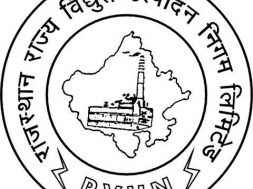
The fate of five sectors is intertwined with India’s decarbonization efforts and energy to cement companies will be at the centre of this transition, according to Jefferies.
Coal, agriculture, transport, power utilities and heavy industries will be pivotal to India’s transition to a low-carbon economy, according to a Jefferies report. “The transition will present unique challenges and opportunities across these sectors.”
India will need an estimated investment of $140-170 billion annually to achieve net-zero emissions by 2070, the report said. Total spending of about $2 trillion will be required, which will create investable opportunities, it said.
Here are the companies Jefferies is looking at as India steps up decarbonization efforts:
Coal
Coal India Ltd. is a significant contributor to the government’s kitty and one of the largest employers in the country, Jefferies said. And it will be among the firms that will take the biggest financial hits.
Jefferies said the company has already started diversifying assets. It aims to set up 3 gigawatts of solar capacity by FY24 and is also exploring manufacturing solar cells.
GAIL Ltd. will be another state-run company in focus due to the move away from coal. Jefferies expects natural gas to displace coal as an important energy source in the transition, forming up to 15% of India’s energy mix by 2030. GAIL’s 220 million metric standard cubic meter per day capacity, along with additional capex, will help it increase distribution.
Agriculture
UPL Ltd. is among the handful of Indian firms that has signed the Amazon-led Climate Pledge committing to reduce emissions. It has already reduced water consumption with 60% of its manufacturing units having zero-liquid discharge.
Jefferies said the company will drive adoption of digital solutions in agriculture, with 14 lakh farmers already on-board its nurture.farm platform.
Transport
Tata Motors Ltd. has taken the lead in passenger electric vehicles with 7% of the market, Jefferies said. It plans to increase its existing portfolio of EVs to 10 by FY26. “We see recent investment by TPG as key to providing the requisite balance sheet strength in driving their electrification ambitions.”
Among two-wheeler makers, Bajaj Auto Ltd., TVS Motors Ltd. and Hero MotoCorp Ltd. are expanding capacity and portfolio. Jefferies said the ownership costs for electric scooters have already turned attractive thanks to demand-side incentives. “We expect this trend to continue as the impact of supply-side incentives begin to flow through.”
Power
Jefferies said state power distribution companies will underpin the energy transition. However, they remain the weakest link.
Discoms are financially vulnerable and that is inhibiting their appetite for investment and transformation of the power grid, it said.
NTPC Ltd. will be a key beneficiary of the shift to renewable power capacity addition as, being a government entity, it has access to the lowest cost of funding. Power Grid Corp. of India Ltd. will also benefit from increased spending by the government for setting up an inter-state transmission line.
Heavy Industry
Reducing emissions from heavy industry will be challenging in the absence of technological breakthroughs, as the inherent production process is polluting.
Cement companies have made some progress increasing use of renewables as well as slag and fly ash.
Shree Cement Ltd. and Ramco Cement Ltd. are the clear leaders as 50% of their power comes from renewables, Jefferies said. Besides, Shree Cement is active under India’s ‘Perform, Achieve and Trade’ scheme that incentivises efficient energy consumption.
UltraTech Cement Ltd. and Ambuja Cements Ltd. have both pledged to cut emissions with science-based targets.
Source : bloombergquint













